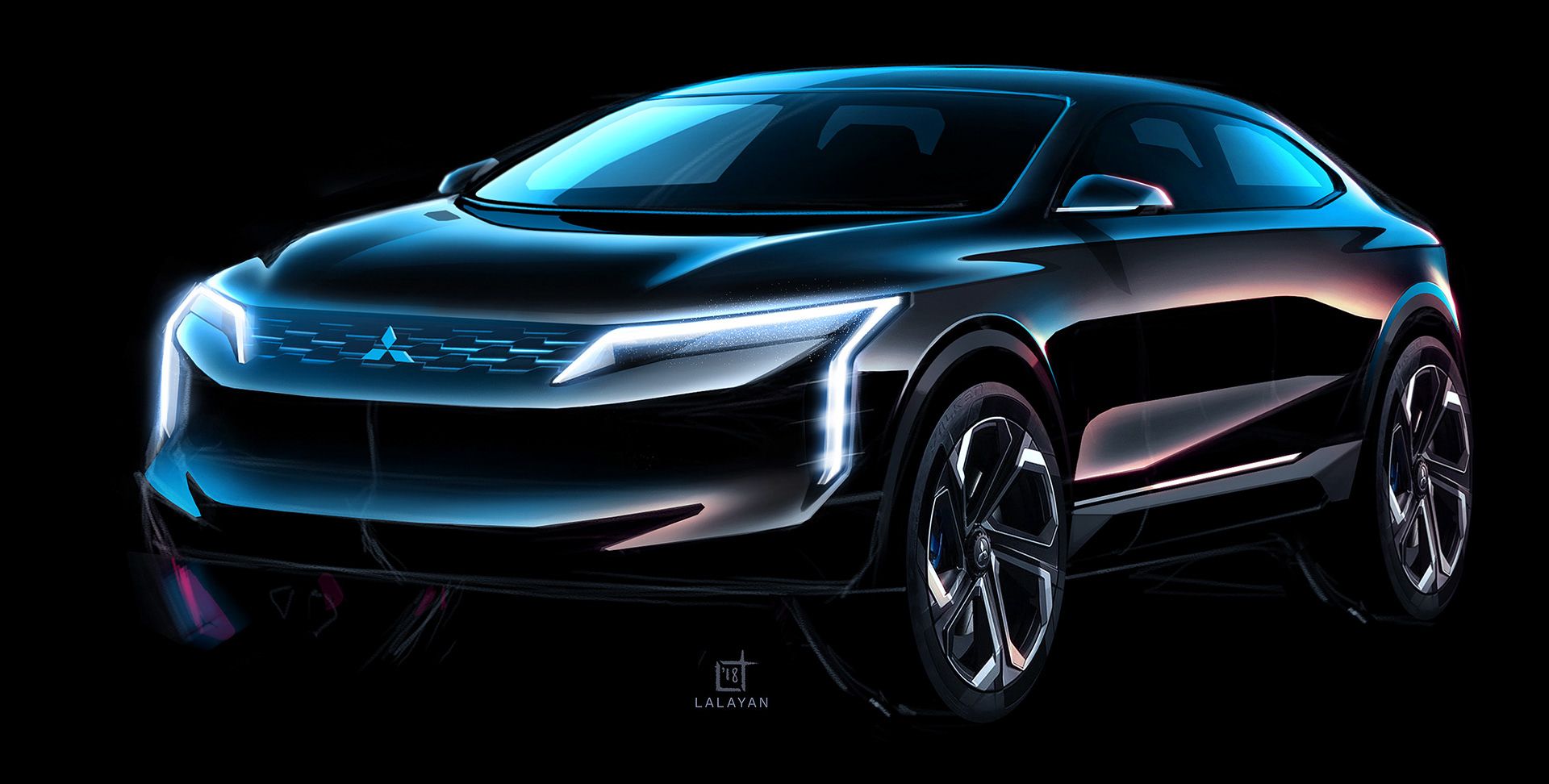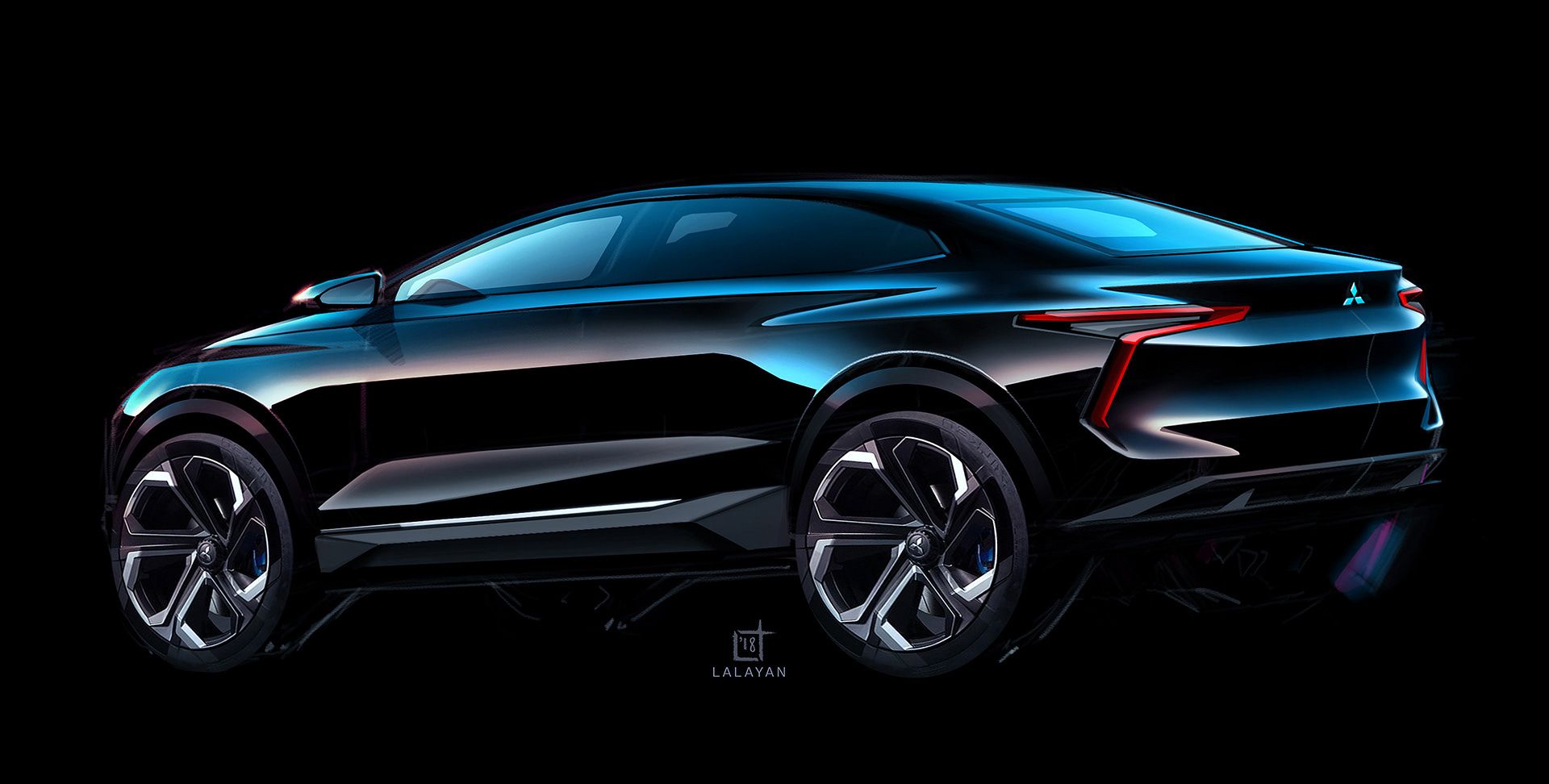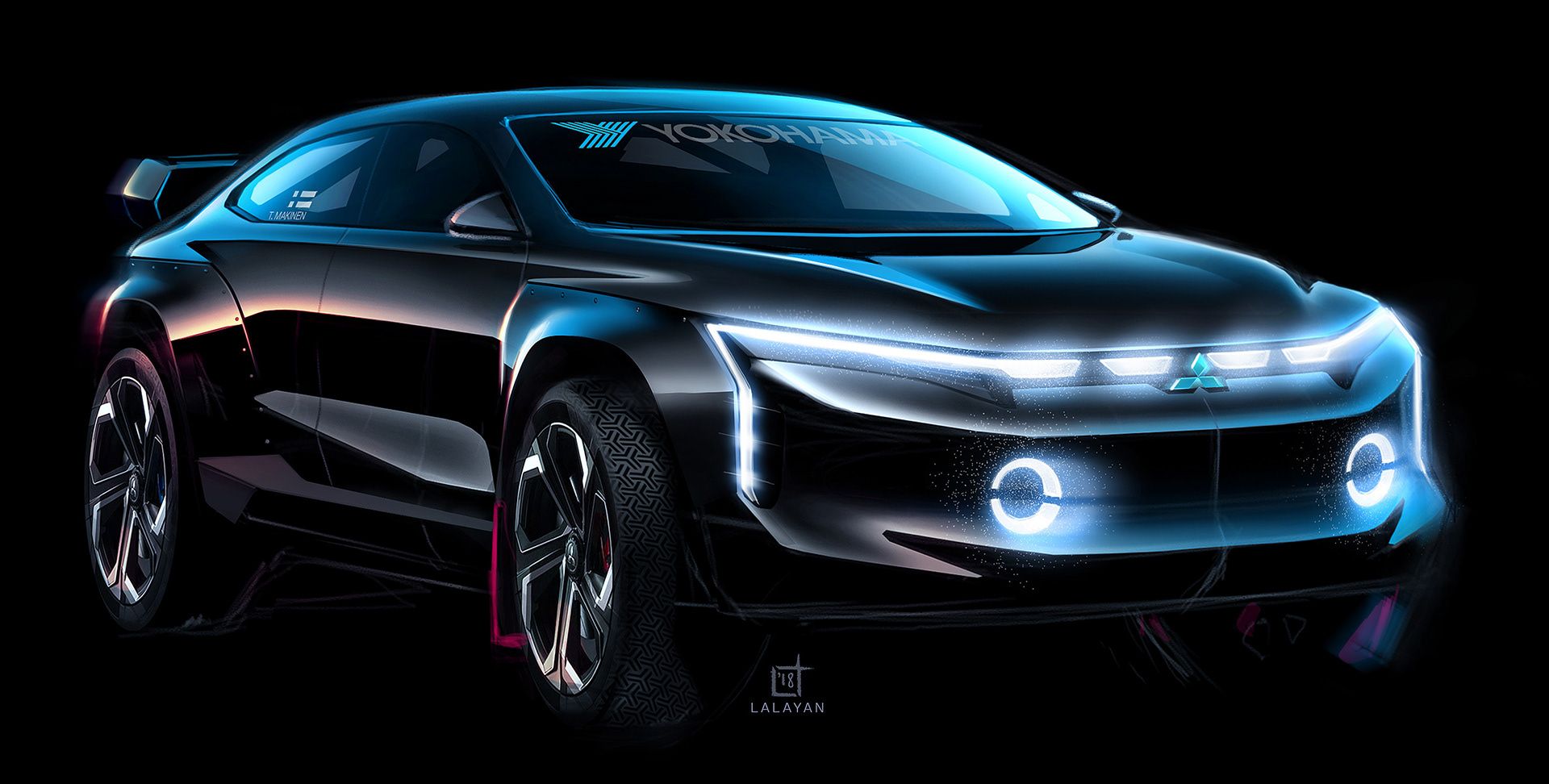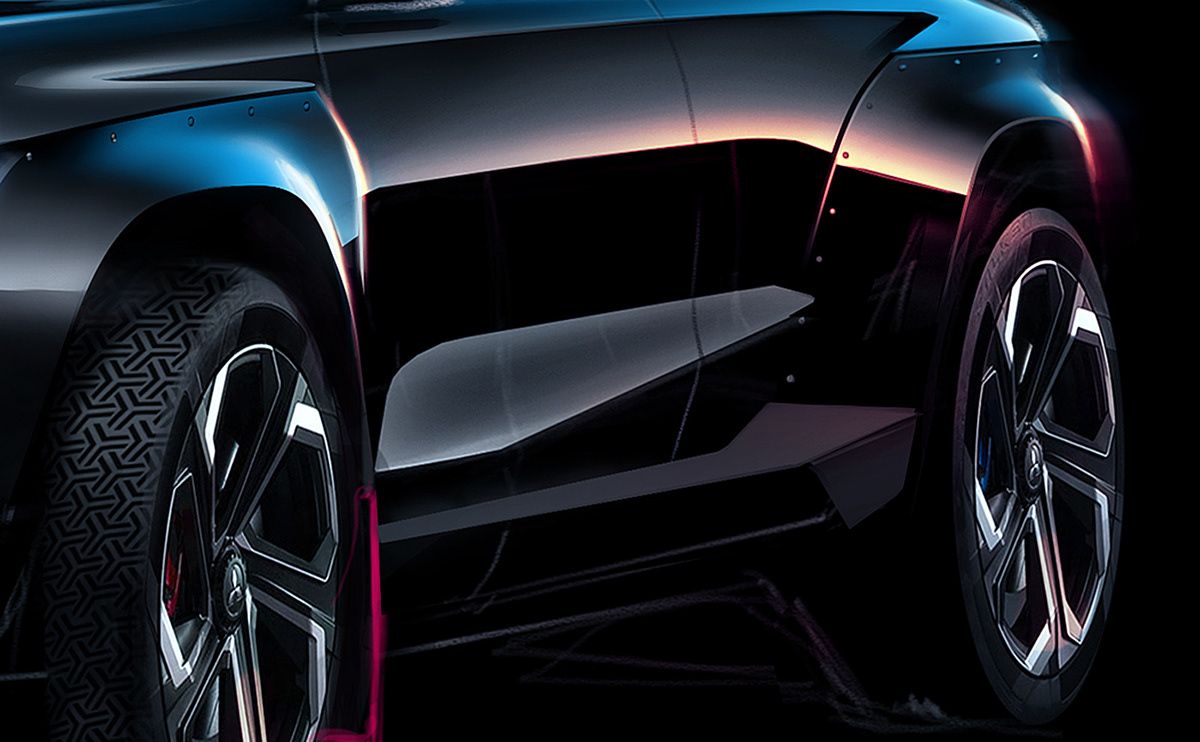As the SUV market is growing larger by the year, more and more automakers are giving up on SUVs to make crossovers. Ford has already announced plans to drop almost every nameplate that's not a crossover in the U.S. soon, and Mitsubishi seems to follow the same path. Having turned the Eclipse sports car into a crossover, the Japanese firm wants to do the same with the Lancer.
In 2017, Mitsubishi launched the Eclipse Cross, a compact crossover that slots between the Outlander Sport and the Outlander. Previewed by the XR-PHEV concept, this new hauler borrowed its name from an iconic sports car that Mitsubishi built between 1989 and 2011 in Illinois. With the iconic Lancer discontinued in 2017 after no fewer than 44 years on the market, the Japanese carmaker is pondering a revival of the name for a new crossover.
Rumors of this radical change have been flying around for a few years now, and Mitsubishi confirmed earlier in 2018, through COO Trevor Mann, that the next-gen Lancer doesn't have to be "a very conventional hatchback." "We're thinking quite radically," he added, hinting that the Lancer name may join the Eclipse on the SUV market. It remains unknown when it will happen, but a new rendering Tigran Lalayan, a designed from Pininfarina, gives us a look at what the Lancer Cross might look like.
Continue reading to learn more about the upcoming Mitsubishi Lancer Cross.
2020 Mitsubishi Lancer Cross
- Make: Array
- Model: 2020 Mitsubishi Lancer Cross
- [do not use] Vehicle Model: Array
Exterior
The rendering seen here is very conceptual and shows what Mitsubishi might design as a preview. The Japanese firm unveiled many concept vehicles in recent years, and most of them were crossovers. It's natural to believe that the Lancer Cross will also break cover as a show car at first.
Lalayan's concept is both sturdy and aggressive. The aggressiveness comes with the Lancer badge, as the Evolution is already an iconic sports sedan with deep roots in rally racing. While the rendering shows a design language that's different from what we've seen from Mitsubishi in recent years, it's still somewhat recognizable.
The front fascia is particularly interesting, as the headlamps extend the entire width of the car. There are a couple of long LED strips that extend toward the apron, like on the Cadillac CT6 for instance, with two additional lights on each side of the emblem placed in the center of the grille. Two circular LED lights placed in the bumper act as fog lamps. The bumper itself is very aggressive, featuring a large opening and sharp winglets on the sides. Despite being aggressive, the crossover retains a tall ride height.
The front fenders are very wide and feature visible bolts at the top. I'm guessing the design wanted to link the Lancer to its motorsport heritage through these small details. The rear fenders are equally beefed-up, while the side skirts are big and boxy. The crossover was envisioned as a two-door, with long quarter windows and a coupe-style roof. Like many concept cars, it rides on massive wheels. The tires seem to have an off-road-ready tread.
Around back, we can see an interesting multi-tier design. While the trunk lid incorporates a spoiler, the area below extends in front of the fascia. The same thing happens a few inches below, where the bumper starts. The latter features sharp winglets, just like the front sections, while the apron has large exhaust pipes and vents. The taillights are shaped like the letter "P," but they're very sharp toward the "Mitsubishi" emblem and on the fenders. Just like the headlamps, they extend a lot into the bumper.
Needless to say, this is one sexy rendering, and I can definitely see this thing in a booth as a real-life concept car. However, while it's not very likely for Mitsubishi to make one just like this, the production model won't be nearly as aggressive. But a two-door crossover layout is an interesting option for the Lancer, as it would be different than anything else Mitsubishi offers right now. On the other hand, two-door SUVs aren't exactly popular, and there aren't many options out there aside from the boxy Jeep Wrangler and Suzuki Jimny and the really expensive Range Rover Evoque.
Interior
It's anyone's guess what the Lancer Cross will sport on the inside, but I think that the new Eclipse Cross provides a few hints. The company's newest crossover boasts a German-like layout with better looking plastics and trim, a sizable infotainment display, and a modern looking instrument cluster.
Don't look for any features related to the Lancer, as the sedan is more than 10 years old. Sure, the nameplate continues to be offered in China and Taiwan with a new design, but the revised interior still looks somewhat dated for the U.S. market.
This crossover is likely to arrive beyond 2020, so it will probably get some technology that Mitsubishi doesn't offer yet. The company could even opt to position the Lancer Cross in a more premium segment, and thus add features and options usually not available for vehicles like the Eclipse Cross and the Outlander.
Drivetrain
Obviously, there's no drivetrain information to run buy, so all we can do is speculate as to what the Lancer Cross might get under the hood. The best thing to do right now is to look under the hood of the Eclipse Cross for hints. Although the Lancer Cross will compete in a different niche, it's very likely that the two crossovers will share engines, if not all underpinnings.
The Eclipse Cross comes with two engine options. There's a sole gasoline option in the U.S., in the form of a turbocharged, 1.5-liter four-cylinder rated at 152 horsepower and 184 pound-feet of torque. Powerful enough for the compact SUV, this mill would be good enough for the Lancer Cross too. Its fuel economy of up to 29 mpg highway and 26 mpg city is also decent for a crossover.
In other markets, the Eclipse Cross is offered with a 2.2-liter turbodiesel. Specs aren't yet available, but it should have more than 120 horsepower.
While the gas engine mates to a CVT, the diesel is paired to an eight-speed automatic transmission. The company's already familiar Super All-Wheel Control system will be offered on the upcoming crossover too.
A hybrid version could also be offered. While the small Eclipse Cross and Outlander Sport have yet to gain a gasoline-electric combo, Mitsubishi plans to expand hybrid drivetrains beyond the Outlander PHEV. The latter was just upgraded to a new 2.4-liter, Atkinson-cycle four-cylinder and larger electric motors and battery. Each electric motor delivers around 90 horsepower, while the gas engine pumps out 133 horses. The all-electric range is estimated at 28 miles. It remains to be seen whether this drivetrain fits in the Lancer Cross, but Mitsubishi could be working on a more compact layout as we speak.
Pricing
Pricing depends very much on where Mitsubishi will place this crossover. If the Lancer Cross becomes a conventional four-door crossover, it could slot either between the Outlander Sport and the Eclipse Cross or between the Eclipse Cross and the Outlander.
With the Eclipse Cross coming in at 4.4 meters (173.4 inches) in length and the Outlander measuring 4.7 meters (184.8 inches), a new crossover between them would make some sense. However, with the Outlander Sport measuring almost 4.3 meters (169.1 inches), squeezing another mini SUV below the Eclipse Cross is rather difficult.
So there's a big chance that the Lancer Cross will actually be a sporty, two-door crossover aimed at a slightly different market. Or a slightly taller hatchback if you will. In both cases, the Lancer could have a similar price to the Eclipse Cross, which retails from $23,295. Being slightly sportier, it could start from around $25,000, which would make it the most expensive Mitsubishi in the United States.
There's also the possibility that Mitsubishi will want to place the Lancer in a premium-oriented market and offer better materials and more technology in standard trim. This could move the crossover closer to the $30,000 mark. But with no actual information on this vehicle, we can only speculate for the time being.
Competition
Toyota C-HR
If the Lancer Cross will be a sporty, coupe-style crossover, it will go against the Toyota C-HR. Introduced for the 2018 model year, the C-HR is the company's smallest crossover, and it looks a lot like a hatchback on stilts. Appealing on the outside, the C-HR has a modern interior with a big infotainment display, a simple center stack, and plenty of tech features. Motivation is provided by a 2.0-liter four-cylinder rated at 144 horsepower and 139 pound-feet of torque, which uses a CVT to send its power to the wheels. The C-HR is also available with a hybrid drivetrain. Pricing for this crossover starts from $20,945.
Read our full story on the 2018 Toyota C-HR.
Honda HR-V
While the Nissan Juke is getting a bit long in the tooth and I wouldn't include it here until it gets a redesign, Honda has a solid proposition in the form of the HR-V. It also has a sporty, hatchback-style design, but it's not as funky as the C-HR. Its interior is simple and ergonomic, and even though the infotainment system isn't as modern as the Toyota's, it gets the job done in terms of apps and features. Power comes from a 1.8-liter four-cylinder engine that cranks out 138 horsepower and 127 pound-feet of torque. Transmission options include a six-speed manual and a CVT, while all-wheel drive is optional. Pricing for the HR-V starts from $20,520.
Read our full review of the 2018 Honda HR-V.
Conclusion
The Lancer Cross is nothing but a rendering and speculative information as of this writing, but Mitsubishi hinted more than once that the iconic compact sedan could become a crossover in the future. Whether it will happen in 2020 or in 2022 remains unknown, but there's a very big chance that the Lancer will never return as a sedan again. Sure, the Japanese firm will get a lot of heat for slapping the "Lancer" badge on an SUV, but that's how the cookie crumbles nowadays. Sedans are getting less popular, while the SUV market is booming like crazy, and automakers have to go with the trend in order to survive. Mitsubishi isn't doing particularly well, so a big crossover lineup might just save the brand. And who knows, maybe the Lancer Cross will be a really good SUV.
Further Reading
Read our full review on the 2016 Mitsubishi Lancer.
Read our full review on the 2018 Mitsubishi Eclipse Cross.
Read our full review on the 2017 Mitsubishi e-Evolution Concept.
Read more Mitsubishi news.








